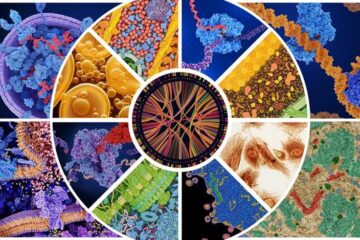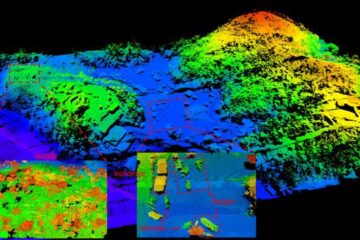Decoded gene sequence of the diatom Thalassiosira pseudonana

For the very first time, the genetic make-up of a planktonic marine alga has been sequenced. During this process, a team of international scientists found unexpected metabolic pathways in the diatom Thalassiosira pseudonana. The results will be published in the scientific journal ‘Science’ this week.
The fact that Thalassiosira pseudonana operates a urea cycle, has been a special discovery. Up to now, this metabolic pathway for ammonia detoxification was known only from the liver cells of animals and humans. It remains unclear how the cycle works in the alga. In addition, the diatom has two separate means for digesting fat, which is also unusual. One digestive mechanism is carried out as in animals, within mitochondria, the cell’s ‘power stations’. In contrast, fatty acids are broken down in regular plant-like fashion inside peroxysomes used for detoxification. Hence, the boundary between animals and plants appears blurred in this species of diatom.
The genome sequencing of Thalassiosira pseudonana is also of great interest for evolutionary biologists. Scientists came across genes which originate from the nucleus of a red alga. Gene transfer of this kind supports the theory of secondary endosymbiosis. Eukaryotes, such as diatoms, are complex cells with membrane bound nucleus and cell organelles. All living organisms other than bacteria are comprised of eukaryotic cells. Almost all eukaryotic cells, including human ones, have mitochondria. Plant and algal cells also contain plastids for photosynthesis. Originally, both types of organelles were bacteria that were incorporated by eukaryotic cells. For this reason, they are often termed ‘primary endosymbionts’. In several cases, secondary endosymbiosis took place in that one eukaryotic cell was incorporated by another and subsequently reduced to a – now secondary – organelle. Diatoms appear to have engulfed a unicellular species of red alga and transformed it into a secondary plastid. “The diatom is some kind of a chimera of several organisms”, says Dr Klaus Valentin of the Alfred Wegener Institute for Polar and Marine Research. This explains the presence of red algal genes in T. pseudonana according to Klaus Valentin, who participated in this project, among other ways, through identification of genes.
Diatoms such as Thalassiosira are of great ecological importance, because they contribute an estimated 20 percent to global primary production. Their role within the global carbon cycle is therefore comparable to tropical rain forests. The unicellular algae occur across the whole globe in ocean and fresh water environments, and even inhabit layers of liquid on soils, rocks or trees. They form the basis of a highly efficient food web, and, for this reason, are also key to commercial fisheries. For instance, the red pigments from diatoms are responsible for the red colouration of salmon. Diatoms carry their name for the presence of a two-part internal casing which consists of silica and may be beautifully ornamented.
The genome sequencing project of Thalassiosira pseudonana was coordinated by the USA and financed by the US Department of Energy. German participation in the project includes, apart from Dr Klaus Valentin of the Alfred Wegener Institute, Dr Nils Kröger, who holds a professorship of biochemistry at the University of Regensburg.
The article ‘The Genome of the Diatom Thalassiosira pseudonana: Ecology, Evolution and Metabolism’ will be published in the journal ‘Science’ on October 1.
Media Contact
More Information:
http://www.awi-bremerhaven.deAll latest news from the category: Life Sciences and Chemistry
Articles and reports from the Life Sciences and chemistry area deal with applied and basic research into modern biology, chemistry and human medicine.
Valuable information can be found on a range of life sciences fields including bacteriology, biochemistry, bionics, bioinformatics, biophysics, biotechnology, genetics, geobotany, human biology, marine biology, microbiology, molecular biology, cellular biology, zoology, bioinorganic chemistry, microchemistry and environmental chemistry.
Newest articles

A universal framework for spatial biology
SpatialData is a freely accessible tool to unify and integrate data from different omics technologies accounting for spatial information, which can provide holistic insights into health and disease. Biological processes…

How complex biological processes arise
A $20 million grant from the U.S. National Science Foundation (NSF) will support the establishment and operation of the National Synthesis Center for Emergence in the Molecular and Cellular Sciences (NCEMS) at…

Airborne single-photon lidar system achieves high-resolution 3D imaging
Compact, low-power system opens doors for photon-efficient drone and satellite-based environmental monitoring and mapping. Researchers have developed a compact and lightweight single-photon airborne lidar system that can acquire high-resolution 3D…





















